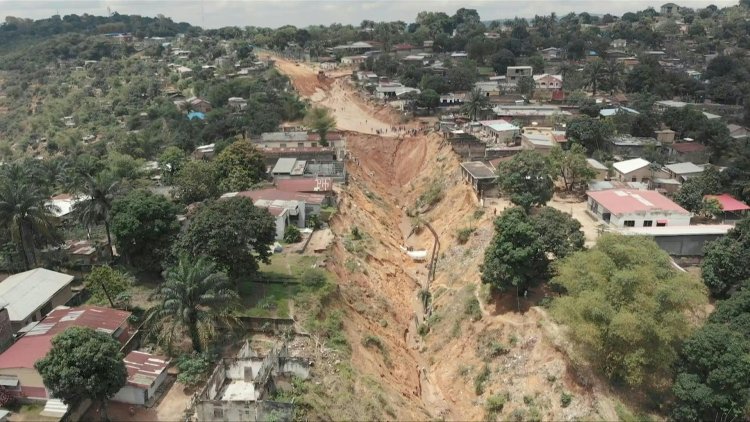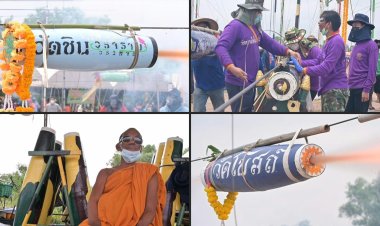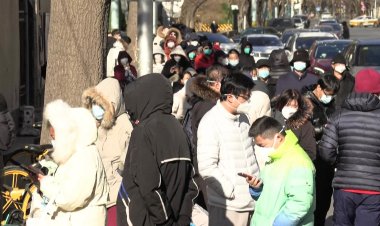Flood damage exposes Kinshasa's unbridled urbanization

The water transformed a main road into a ravine. It gutted homes, exposing their innards to the world. It left a school playground teetering on the edge of a precipice.
These images come from Kinshasa, capital of the Democratic Republic of Congo, where a population influx combined with scant urban planning has exposed many poor people to the impacts of extreme weather.
Millions of people have moved into the city in recent years, although the exact numbers are unknown as no census has been conducted for more than 30 years.
According to some estimates, the city is home to at least 12 million people, a doubling in two decades, out of a national population of some 90 million.
Many have built homes in areas where there has been little planning oversight, especially on hillsides where drains and channels are needed to cope with runoff during the rainy season.
In November 2019, forty Kinshasans died after heavy rains caused flooding and landslides -- but two years later, the problems posed by extreme rainfall remain.
At the top of a cliff in Kinshasa's southern district of Mont-Ngafula, disused water pipes hang in a void and residents must battle through a gully of shifting sand to reach the neighboring district.
Floodwater dug out an asphalt avenue, replacing it with an abyss at least 15 meters (50 feet) deep, separating the University of Kinshasa from a Jesuit-run library, one of the biggest in Africa.
Widowed mother-of-seven Esperance Tsimba, 57, saw the earth swallow her shop and livelihood as the rains fell.















